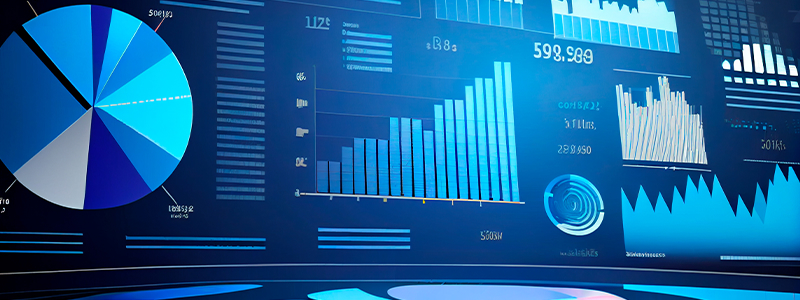
Beyond OCR Form Processing: The Comprehensive Guide to Intelligent Form Data Extraction
As businesses continue to deal with an ever-increasing volume of forms, invoices, and documents, the need for accuracy, speed, and adaptability in data extraction has never been more pronounced. Traditional Optical Character Recognition (OCR) technology has long been a staple in form processing, but as technology advances, so do the expectations for smarter, more intelligent solutions
What is OCR Form Processing?
OCR, or Optical Character Recognition, is a technology that converts different types of documents, such as scanned paper documents and pdfs into editable and searchable data.
OCR form processing specifically refers to the application of OCR technology to extract data from forms. These forms can include contracts, surveys, applications, and medical records.
Key Steps in OCR Form Processing

OCR converts text images into machine-readable text by following these steps:
Step 1: Scan and digitize the image.
OCR scans and changes the text image into a digital format, like a bitmap or vector file. This makes a grid of pixels or points that show the shapes and colors of the image.
Step 2: Enhance the image quality.
OCR improves image quality and readability by using techniques such as noise reduction, binarization, skew correction, segmentation, and scaling. These techniques remove any things that are not needed, like dust, shadows, or background, and change the image’s direction, size, and quality.
Step 3: Recognize the characters and symbols.
OCR identifies the individual characters and symbols in the image by using methods such as template matching, neural networks, or machine learning. These methods match the shapes and patterns of the pixels or points with a list of known characters and symbols and pick the best one.
Step 4: Correct and improve text accuracy.
OCR corrects and improves text accuracy by using techniques like context analysis and natural language processing. These techniques check and fix any mistakes or differences in the text and use clues like the position, size, font, and meaning of the text to do this.
Limitations of OCR Form Processing
While OCR is a valuable tool, it is not perfect and can encounter some challenges while extracting data. The accuracy of OCR forms varies based on different kinds of forms: structured/fixed layout forms and semi-structured.
Structured forms have a fixed and predefined layout and format, such as tax forms, surveys, or application forms. OCR works well with structured forms; however, its accuracy is never 100% while some OCR tools are capped at 95% accuracy. Therefore, you roughly lose 3% to 5% of your data if you use OCR for data extraction.
On the other hand, semi-structured forms have a variable and dynamic layout and format, such as invoices, receipts, or contracts. Up to 80% of all forms are semi-structured. OCR form processing performs even worse when dealing with semi-structured forms. Therefore, OCR form processing compromises accuracy further.
Some of the common mistakes that OCR can make are:
- Missing or reading wrong letters or numbers, especially symbols
- Mixing up letters or numbers that look alike, like O and 0, or l and 1
- OCR depends on the quality of the input images, which can be affected by factors such as resolution, lighting, contrast, and noise. Poor quality images can lead to errors and misrecognition of text.
- OCR works best with standard fonts and the Latin alphabet. It may have difficulty recognizing unique fonts and non-Latin languages.
- OCR may struggle with documents that have complex or specific layouts and structures, such as multiple columns, tables, or graphs. These elements can interfere with the text recognition and segmentation process.
- OCR may have limited ability to recognize special characters and symbols, such as mathematical notations, currency signs, or emoticons. These characters and symbols may not be part of the standard alphanumeric set that OCR systems are designed for.
These challenges can also affect the accuracy and reliability of the OCR results.
Intelligent Form Data Extraction
Intelligent form data extraction is a better alternative to form processing as it overcomes the limitations of OCR. Intelligent form data extraction uses artificial intelligence and machine learning to extract relevant data from various sources and formats, such as documents, images, or forms. It can also validate, verify, structure, and enrich the extracted data, making it ready for further use or integration.
Data Validation and Verification
Intelligent form extraction can check extracted data against predefined rules, databases, or external sources to ensure its accuracy and completeness. It can also flag any missing, incorrect, or inconsistent data for further review or correction.
For instance, intelligent form extraction can verify the identity of a customer by comparing the data extracted from their ID document with their online profile or a third-party service. This can help prevent fraud, identity theft, or money laundering.
Intelligent form extraction also offers higher accuracy than traditional OCR methods. OCR models don’t offer 100% accuracy; their accuracy ranges, whereas AI-powered template-based extraction can provide up to 100% accuracy. Therefore, a better approach would be to use AI-powered solutions simultaneously with OCR technology.
Data Structuring and Enrichment
Intelligent form extraction can organize the extracted data into a structured format, such as JSON, XML, or CSV, that can be easily integrated with other systems or applications.
For example, intelligent form extraction can structure the data extracted from a contract into a table that shows the parties, terms, dates, and amounts involved. It can also add metadata, such as the source, format, and location of the contract.
Intelligent form data extraction employs AI to enhance data quality. AI can apply techniques such as machine learning, natural language processing, computer vision, and deep learning to analyze, interpret, and validate the data from forms.
Benefits of Intelligent Form Extraction
The business benefits of leveraging intelligent form extraction are manifold, such as:
- Increased productivity and efficiency: Intelligent form extraction can reduce the time and effort required to process forms manually, allowing staff to focus on more value-added tasks. It can also increase the scalability of form processing, enabling faster and more reliable service delivery. A Forbes study revealed AI-based extraction techniques save around 30% to 40% of the hours spent on extraction tasks.
- Improved data quality and accuracy: Intelligent form extraction eliminates human errors, such as typos, misreading’s, or omissions, that can compromise the quality and accuracy of data. It can also ensure the consistency and standardization of data across different forms and sources.
- Enhanced data insights and analytics: Intelligent form extraction can unlock the value of data hidden in forms, by transforming it into a structured and usable format. It can also enable deeper and richer data analysis, by providing additional information, such as metadata, timestamps, or confidence scores. This can help businesses gain insights, make decisions, and drive innovation.
Applications of Intelligent Form Extraction
Intelligent form extraction can play a vital role in various industries, such as healthcare, insurance, banking, and supply chain, to streamline tasks like document review, contract analysis, invoice processing, and more. Examples of how intelligent form extraction can be applied in different domains include:
Healthcare
Intelligent form extraction helps healthcare providers and insurers automate the processing of medical forms, such as claims, prescriptions, lab reports, and patient records. This reduces manual errors, speeds up reimbursements, improves patient care, and ensures compliance with regulations. For example, intelligent form extraction can extract the diagnosis, treatment, and billing information from a claim form and match it with the patient’s medical history and insurance policy. It can also flag any discrepancies, such as overbilling, underbilling, or duplicate claims.
One of the leading medical device manufacturers, Boston Scientific, has automated form processing, processing invoices, transmission summaries, preregistration processes, and inventory processing to improve customer service. Apart from monetary savings (US$240,000), it has resulted in error-free handling of medical data.
Insurance
Intelligent form extraction can help insurance companies streamline the processing of forms, such as policies, applications, claims, and renewals. This can enhance customer service, reduce operational costs, enhance fraud detection, and optimize risk management.
For instance, intelligent form extraction can extract the personal, vehicle, and accident information from a car insurance claim form and compare it with the policy details and the damage assessment. It can also flag any suspicious or fraudulent claims, such as staged accidents, inflated damages, or false injuries.
Banking
Intelligent form extraction can help banks and financial institutions automate the processing of forms, such as loan applications, credit reports, identity documents, and statements. This can improve customer experience, reduce processing time, increase security, and comply with regulations.
For instance, intelligent form extraction can extract the income, expense, and debt information from a loan application form and calculate the credit score and the loan eligibility of the applicant. It can also verify the identity and the financial history of the applicant by cross-checking the data extracted from their ID document and their bank statement.
Intelligent form extraction can also save a significant amount of time and money for the finance team, by reducing the rework caused by human error. According to a report by Gartner, intelligent data extraction can save 25,000 hours of rework for the finance team caused by human error costing $878,000 annually for an enterprise with 40 members of an accounting team.
Supply Chain
Intelligent form extraction helps supply chain and logistics companies automate the processing of forms, such as invoices, purchase orders, delivery notes, and bills of lading. This improves efficiency, accuracy, visibility, and collaboration across the supply chain.
Intelligent form extraction can extract the product, quantity, price, and delivery information from an invoice and match it with the corresponding purchase order and delivery note. It can also flag any discrepancies, such as missing, incorrect, or delayed deliveries.
Harnessing the Power of Intelligent Form Extraction with Astera ReportMiner
Astera ReportMiner is a powerful tool that enables you to capture, transform, and convert data from any form or document format. It combines the best of AI-driven automation and OCR capabilities to streamline your data extraction and integration workflows.
- Data Extraction from Various Formats: Astera ReportMiner can handle a wide range of document formats, including PDFs, PDF forms, PRN, TXT, RTF, DOC, DOCX, XLS, and XLSX. Whether it’s invoices, reports, or other structured or unstructured data, ReportMiner can extract relevant information efficiently.
- Advanced AI: ReportMiner leverages AI algorithms to automatically identify data fields within documents. It can intelligently parse names, addresses, and other critical data points. This ensures accurate extraction even from complex documents.
- Reusable Extraction Templates: With ReportMiner, you can create reusable extraction templates. These templates allow you to handle multiple files with similar formats consistently. By defining extraction rules once, you can achieve up to 100% accuracy in data extraction across various documents.
- OCR Integration: When dealing with scanned documents or non-extractable PDFs (which contain images), ReportMiner offers an OCR option. OCR allows it to process scanned copies and convert it into machine-readable text, which can be parsed via extraction templates.
- Data Validation and Quality Assurance: ReportMiner not only extracts data but also validates its quality. You can clean and correct any misread items or erroneous readings using the Edit Mode. This ensures that the extracted data is accurate and reliable.
Don’t miss out on harnessing the potential of your unstructured data—try Astera ReportMiner today! You can download the free 14-day trial here or request a personalized demo here.
 Astera AI Agent Builder - First Look Coming Soon!
Astera AI Agent Builder - First Look Coming Soon!

